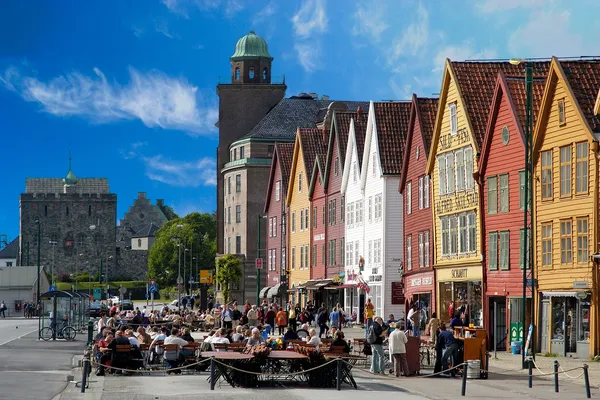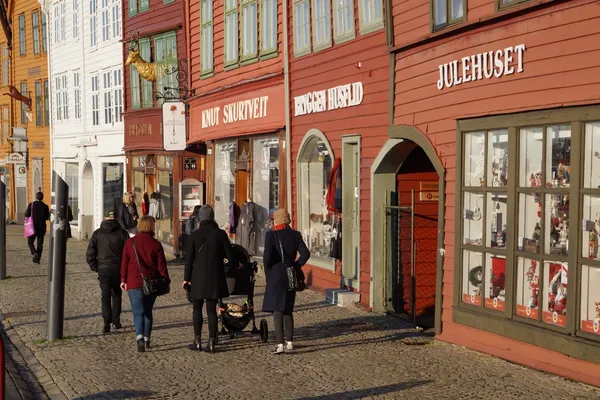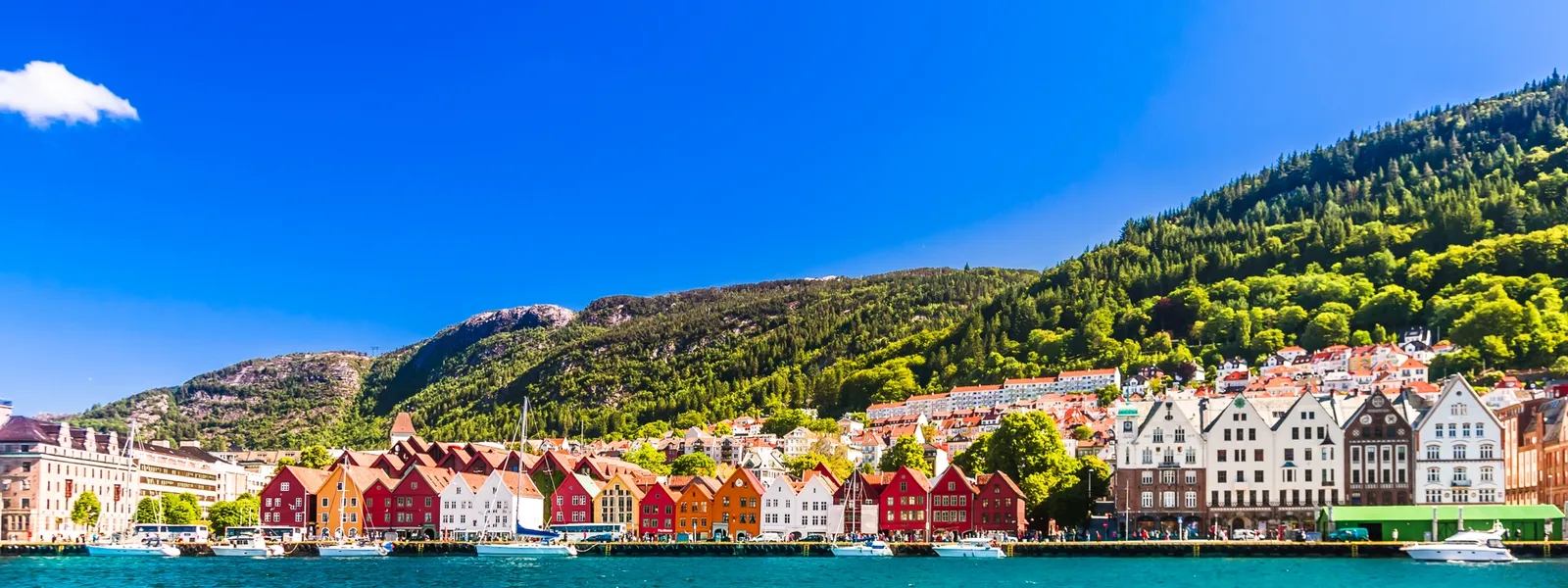
Foto: Robin Strand / VisitBergen
Bergen was founded in the late 11th century, and traces of this period can still be found in Bryggen.The town grew up around a church and monastery, and the construction pattern from the city’s development in the 12th century can still be seen in the area’s narrow alleys and buildings.
During the 14th century, the town became a centre of trade with the rest of Europe, and in the mid-15th century the famous German merchants’ association, the Hanseatic League, established a foreign base in the town, thereby including it in the association’s strong European trade network.Bergen became primarily known for its fishing trade, including dried fish from northern Norway, and Fisketorget (the Fish Market) is an important part of historical Bergen.

Foto: Visit Bergen / Casper Steinsland - visitBergen.com
The trading houses on Bryggen, right next to the port, functioned as storehouses for export and import, as well as offices, trading areas and homes for the area’s rich merchants.
Unfortunately, many of the original buildings burned down during a major fire in Bergen in 1702, but the traditional building pattern and the Hanseatic architecture were preserved when the quarter was rebuilt – and this is precisely one of the reasons for which in 1979 the area was added to UNESCO’s list of World Heritage Sites.
In recent decades, the area has been taken over by a great many creative businesses and when you visit this fascinating area, you’ll now be able to look in on designers and artists focusing on textile design, jewellery design, illustration, knitting, photography, books – and much, much more – on your way through the narrow passages hidden behind the iconic façade that faces the port.
If you’re really interested in the history, you can visit the Hanseatic Museum and Schøtstuerne – the last remaining meeting rooms from the Hanseatic merchants’ era. The museum also offers guided tours of Bryggen, so you can hear much more about what life was like in this area 700 years ago.

Foto: VisitBergen.com

